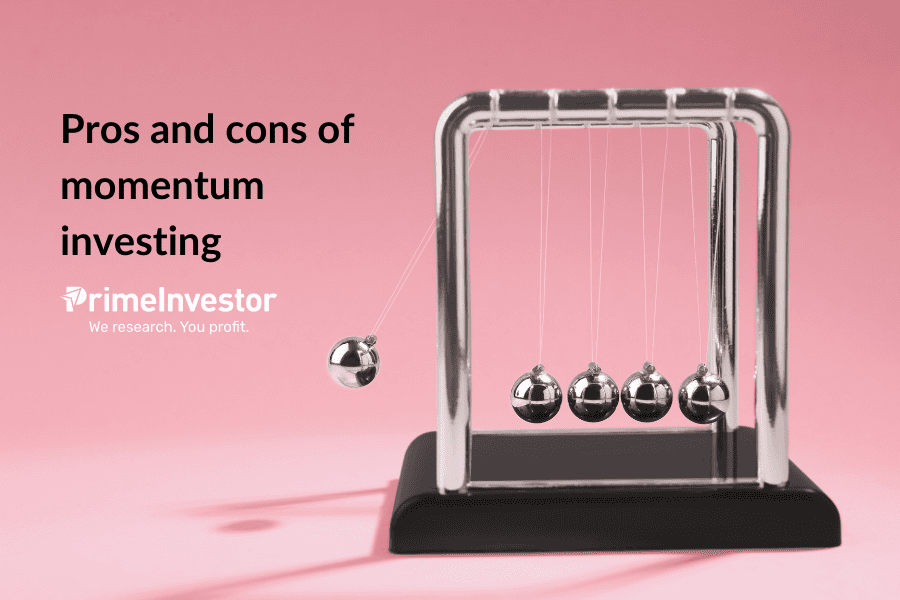Most retail investors starting out on equities are fed on a nutritious diet of lessons from Warren Buffett, Benjamin Graham, Peter Lynch and other greats, who were essentially fundamental investors.
The crux of their teachings is that investors should think of stock ownership as owning a slice of the business. Therefore, they should put all their efforts into understanding businesses, buying those that can throw up a rising pile of earnings and cash and then sit on these stocks, hopefully forever. If you can buy a stock when a great business is down in the dumps or when there is blood on the Street, you are a good investor.

Why momentum investing
Yes, in theory, you can’t go wrong following the above tenets. But in practise, fundamental investors often find their portfolios lagging due to the following reasons.
- The market takes an inordinately long time to recognise value in the gems you have bought.
- In buying a cheap stock, you have missed something that the market knows about the company’s governance, prospects or regulations, which is going to keep the stock cheap forever.
- You book profits too early on the winners and hang on steadfastly to losers hoping for a turnaround.
- You bought when there was blood on the Street only to find that the bloodbath is set to go on for years, like Israel-Hamas hostilities.
All of the above are pretty common mistakes that most of us make. But bull phases in the market do not last forever. Before you can correct these mistakes, sometimes, big opportunities to make money have slipped by.
Momentum investing was born precisely for this reason. This style of investing is all about ignoring the business, sector, macros etc, and tracking the one thing that matters to all investors – price movements. The momentum style of investing is simply about buying the stocks which have been delivering the highest returns in the recent past, and selling those that have been laggards. Over time, more bells and whistles have been added to this basic version of momentum investing, by adjusting stock price returns for volatility before choosing them. The idea is to weed out stocks that are prone to manic short-term gyrations, and stick only to stocks with ‘genuine’ and durable momentum propelling them.
Does momentum investing work?
Can a strategy as simple as buying rising stocks and avoiding losing ones work in real life? Well, there are a bunch of research papers – some crunching data for 200-odd years from the US markets – showing that it does.
This comprehensive research paper by the Capitalmind folks ran similar data for the Indian markets for the 20 years from January 2000 to May 2020. It found that a ‘naïve’ momentum strategy (which bought the top 30 outperforming stocks from the Nifty 50 every month) converted Rs 100 to Rs 1038 in the 20-year period, after adjusting for taxes. Buying and holding the Nifty 50 delivered Rs 602.
But if stock prices are slaves of earnings, why does momentum investing work? It could be because of the following.
- Fundamental factors that drive the prospects of a sector or a company do not change in a trice. Therefore, winning sectors and companies usually remain winners for several years at a time.
- Confirmation bias and recency bias make fundamental investors feel more comfortable buying businesses that are already doing well. They extrapolate past trends into the future.
- In any growing economy, stock prices display an upward bias in the long run. Bull phases stretch out for many years while bear phases are short and sharp. Therefore, chasing the winners works.
Indian momentum menu
Momentum strategies deliver particularly good results in trending markets. The one-way bull market since Covid has spawned a host of momentum-style options in India.
First, there are passive mutual funds playing the momentum indices offered by the exchanges. Two, there are active mutual funds following ‘proprietary’ momentum strategies. Three, there are AIFs, PMS’ and smallcases again using proprietary strategies.
Momentum in India
The simplest way for investors to try out a momentum strategy in India is through passive ETFs and index funds mirroring momentum-style indices from the exchanges. Most funds are based on just two indices – Nifty 200 Momentum 30 index and the Nifty Midcap 150 Momentum 50 index.
Both these indices use volatility-adjusted returns to pick stocks from the underlying parent indices.
First, 12-month and 6-month momentum ratios are calculated for all stocks in the Nifty 200 index or Nifty Midcap 150. Momentum ratio is the 12-month or 6-month price return of the stock divided by its annualised daily standard deviation. Next, the momentum ratio for each stock is measured against the average for all stocks in the parent index. A weighted average score is calculated with 50-50 weights for 6-month and 12-month scores. Stocks that figure at the top of the rankings on this weighted score, make it to the index.
The weight of each stock is capped at 5%. Only stocks with a minimum listing history of 1 year and traded in F&O are included. The indices are rebalanced once in every 6 months.
The index methodology is available in this document.
How they fared
The following tables show the returns that the two indices have delivered along with risk measures such as standard deviation, based on index data from April 1 2005, to July 16 2024.
For this purpose, for the first data given below we have taken the Nifty 100 and not the Nifty 200, as a comparison, since you do not have a passive fund to ride the Nifty 200.
Before we get into what the above data shows, please note the following:
- While the data is calculated since the index base date of April 2005, these momentum indices were launched only in August, 2020 (Nifty 200 Momentum 30) and August 2022 (Nifty Midcap 150 Momentum 50) respectively. That means the rest of the historical returns data is merely back tested (the risk of a back tested data is that an index methodology can always be tweaked to suit an ideal back tested outcome).
- The above period (from back tested data) had only one meaningful market correction in 2008-09. From the launch date of August 2020 or August 2022, not a single meaningful corrective market phase occurred.
Now for the analysis of the data:
- The average rolling returns on the momentum indices ace the plain-vanilla Nifty100 and Nifty Midcap 150 substantially. This suggests that momentum strategies have tended to outperform the markets over different rolling return periods. However, the data is highly influenced by the trending bull market of the last four years.
- While the momentum indices have slightly bettered the marketcap indices (given above) in the best years, they have also lost more in the worst years in the case of Nifty200 Momentum30. For example, if one were to take the block of rolling 1-year returns for 3 years of 2008, 2009 and 2010, the proportion of outperformance of the Nifty 200 Momentum 30 index over the Nifty 100 was just 48%. That means the momentum index lost to the Nifty100 5 out of 10 times in a period that had just a year of deep market correction!
- Higher standard deviation shows that investors in such funds should expect a bumpier ride than those in plain-vanilla indices.
- Both indices do very well on upside capture, suggesting that in a trending bull market, you will not miss the bus with momentum strategies. But they are prompt in responding to downside too.
The analysis sends the clear message that momentum strategies deliver their best show when you expect a bull market lasts awhile. They may make for dicier investments in a late-stage bull phase, when you expect a time or price correction.
Momentum strategies also suffer from three other big disadvantages.
- By not paying any attention to the underlying business, momentum funds can end up with stocks with poor fundamentals, operator-driven moves or dodgy governance. When these risks come home to roost, returns can suffer. Momentum managers can mitigate such risks only through diversification.
- Given that they chase price action, momentum strategies feature high portfolio churn and transaction costs. While churn may not have tax implications in a mutual fund, it does add to the investor’s tax outgo in a PMS, AIF or smallcase structure. A higher incidence of brokerage, STT etc sets a higher bar on performance from momentum style funds compared to buy-and-hold strategies.
- When there is a bubble burst, crisis or trend reversal in the economy or markets (such as the dotcom crash or global financial crisis), momentum funds will not let you down gently. They are likely to lose much more value than the market. This is because winning sectors usually build up excess baggage and also because they become over-owned by investors.
This risk did in fact play out in Indian markets in 2008 and 2009 when momentum funds lost heavily and underperformed markets. Back-tested data from most AMCs, PMS’ and AIFs showcasing momentum strategies today, does not wholly spotlight this risk. This is because the Covid crash was extremely short-lived and the Indian markets have enjoyed a steady uptrend with unusually low volatility in the last ten years. Bear market damage to momentum portfolios can really hurt wealth creation because arithmetically, it takes a 100% gain to make up for a 50% loss in portfolio value!
Minuses of momentum products
Simpler as it is to use passive funds to ride the momentum style, these funds suffer from certain minuses.
- They are slow to respond to market momentum because the indices are rebalanced only once in six months. Globally, momentum investors prefer monthly rebalancing.
- The choice of momentum stocks is restricted to the Nifty200 or Nifty Midcap150 baskets instead of the entire listed universe.
- Only price returns are considered to gauge momentum, when volume indicators and technical signals can lead to better outcomes.
- Other imperfections of index funds or ETFs, such as high costs (momentum style funds are for some reason more expensive than other factors), tracking error, lack of secondary market liquidity and mispricing in the market, apply to them.
- Being mutual funds, these funds buy outperforming stocks but do not short underperforming stocks. Globally, momentum strategies derive their returns from both legs of the trade.
Active mutual funds, PMS and AIFs, which use momentum strategies try to address some of the above anomalies, in product design. But with most AMCs laying claim to ‘proprietary’ strategies, it is difficult for the investor to gauge exactly what elements are being used by active managers. This can make it difficult to gauge how an active fund, PMS or AIF will fare in the event of a reversal.
Given the above analysis, investors should perhaps take the following approach to momentum-style investments.
- Given high volatility in returns and likelihood of large downside, momentum strategies, if you decide to go for one, should take up a manageable allocation within your portfolio, suited to your appetite for losses, instead of your whole portfolio.
- If you own momentum style funds in your portfolio, counter-balance it with buy-and-hold styles like value and contra.
- Today, rolling, trailing and back-tested returns from momentum strategies are all being measured in a late-stage bull market. Expect momentum style funds to deliver much lower returns from here.
- Momentum style funds are only for investors who can control their behavioural responses to market corrections. Selling during a fall can wipe out most of your returns from a momentum strategy. They are thus more suited to seasoned investors than newbies.
- Tracking the markets and your portfolio closely may be necessary to preserve your returns from momentum funds. Setting a target return and exiting when it is hit may be a good strategy. Alternatively, you can follow traders’ discipline and set a stop-loss, so that you pull out when a correction begins. But this may be possible only with open-end structures. What’s more, other investors may also want to stampede out at the same time, leading to quick value erosion.
P.S: At PrimeInvestor, we do not have any momentum fund recommendations in our list at present.





25 thoughts on “Pros and cons of momentum investing”
Are there any active funds also with momentum strategy, equivallent of something who are buying basis technical analyis, riding waves and exiting stocks. Do let me know if there exist such kind of MF or how can I find them even if you don’t want to recommend one
Can’t be certain as fund houses don’t overtly say it. But typically funds with high portfolio turnover are the ones likely to be using momentum. Quant and Edelweiss use elements of momentum in active funds
Hi Team,
Good analysis on the momentum strategies. I want to build portfolio with index funds than active funds. I am already investing in uti nifty200 momentum 30 index and tata nifty midcap 150 momentum 50 index fund. In the article you mentioned to counter balance with Value or Contra funds. Can we use motilal oswal s&p bse enhanced value index fund or UTI Nifty 500 Value 50 Index Fund for this purpose. I am investing in Motilal Oswal BSE Low Volatility Index Fund and Nippon India Nifty Alpha Low Volatility 30 Index Fund. Out of these 4 funds which funds you suggest along with Momentum funds.
We do not give portfolio-specific recommendations individually. So you will have to pick your own funds. If you want a value fund that is passive, you will find it in our passive category under Equity – Moderate risk. You can also check the active funds in this theme on Prime Funds
We do not recommend momentum. Our point is that if you have chosen to go with momentum, reduce the risk profile with other counter themes like value/contra. But in general, please make sure you have a well-diversified portfolio. Going overweight on momentum can impact in market corrections. Thanks, Vidya
There are types of momentum strategies – absolute, rotational and probably more. Will those also have the same behaviour in general as explained in the article? And to generate optimal long term returns through one’s portfolio should one have multiple strategies -value, growth, momentum and contra and if so in what ratios? Or just it keep it simple by picking from Prime funds? Thanks!
We have run the numbers for the actual strategies being used in India and wouldn’t prefer to speculate on the others. Yes for performance across market cycles, you need a mix of styles.
Good Article, Will be good if primeinvestor team could consider releasing a midcap150 momentum30 or equivalent momentum smallcase with shortcomings addressed (monthly rebalancing, volume and technical indicator for rebalancing etc).
Unlikely we will have a portfolio with momentum. The churns there would not be manageable, esp if we considered all factors such as volume, turnover, other than pricing 🙂
Good article. Another option for momentum investing is small cases, maybe some light can be thrown on the pros/cons there as well.
The broad pros and cons of momentum such as vulnerability to reversals, will apply to smallcases as well..Hard to make more specific comments as smallcases may follow different variations of the style
Is JM Flexicap and motilal midcap fund also apply momentum strategies on their defined domain?
No. Nothing that we know of, nor stated by the scheme. thanks, Vidya
Please clarify if better performers like JM Flexicap and Motilal oswal midcap also follow momentum strategies on their selected quality filters.They seems to have high turnovers.Interestingly they also have buy recommendations from primeinvestor!
I think you should look at “Nifty MidSmallcap400 Momentum Quality 100” index. Unique mix of Mid and Small caps and also the quality filtering to avoid investing on crazy valuations. Feels like it’s a good balance of benefitting from momentum while not letting off basics. There’s also a fund on this from Mirae.
Thanks will take a look. But prima facie not a fan of mixing totally different styles.
Adding to that Mirae recently launched the Midsmall Nifty 400 Momentum 100 index Fund which could potentially be more rewarding than the nifty 200 momentum index.
Great Analysis, The best fund out there for passive momentum strategy is UTI Nifty 200 Momentum 30 index fund and PI should include momentum-based funds in their recommendations.
Comments are closed.